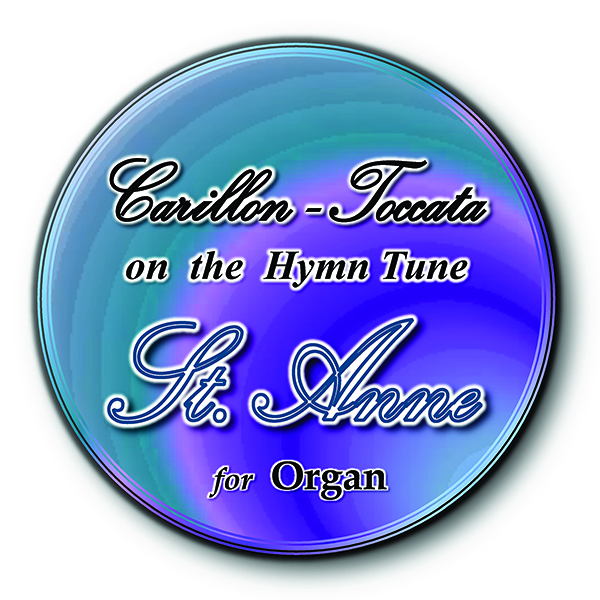
Carillon-Toccata
on the English
Hymn Tune
~
St. Anne
for
Organ
(10 pages)
Notes
Carillon-Toccata on St. Anne is written in the tradition of post-Romantic
French organ toccatas.
It abounds with the pealing
sounds of change-ringing bells, moving in
combination with a stately four-phrase hymn tune and its derivative
three-phrase thematic units.
.
"St. Anne's Tune" was first published in London in 1708 as a musical setting
for Psalm 42; its authorship was later ascribed to William Croft (b. 1678,
d. 1727). The melody was
subsequently reapplied to a variant on the text of Psalm 90, adapted by
Isaac Watts. The opening text originally read: "Our God, our help in ages
past." Its
first
phrase—eight notes in
length―appears as thematic material in
George Frederick
Handel's sixth Chandos Anthem; it is
motivically modified and present
in one of
Georg
Philipp Telemann's Tafelmusik (Musique
de table)
suites; and of course, the notes of its first phrase are nobly
featured in Johann Sebastian Bach's E-flat
major organ fugue (Clavierübung,
III, S. 552). The four complete phrases of the tune and its text have
inspired many compositions, among them a Ralph Vaughan
Williams motet, "Lord, Thou hast been ourrefuge,"
for choir, soloists, organ and trumpet.
.
The toccata opens with an accompanimental figuration, derived from pitches
of the
tune’s first phrase; it is paired with an
emerging melodic unit — a period structure
three phrases in
length. The tripartite theme is sounded consecutively
in tenor,
soprano,
and pedal voices. An ensuing developmental
section features individual phrase
statements that migrate between voices in imitation and
stretto, then prepares the way for a return of
the
opening
toccata statement, this time sounding over
each of
the hymn’s four
distinct phrases, presented in a
temporally augmented (cantus
firmus)
format in the pedal. The coda adds a resoundingly jubilant conclusion.
.
Click on the image
below
to download a complimentary letter-sized 14-page PDF booklet file, intended for
reprintings and performances. For convenience, the file is formatted to allow automated
printing and binding processes.
